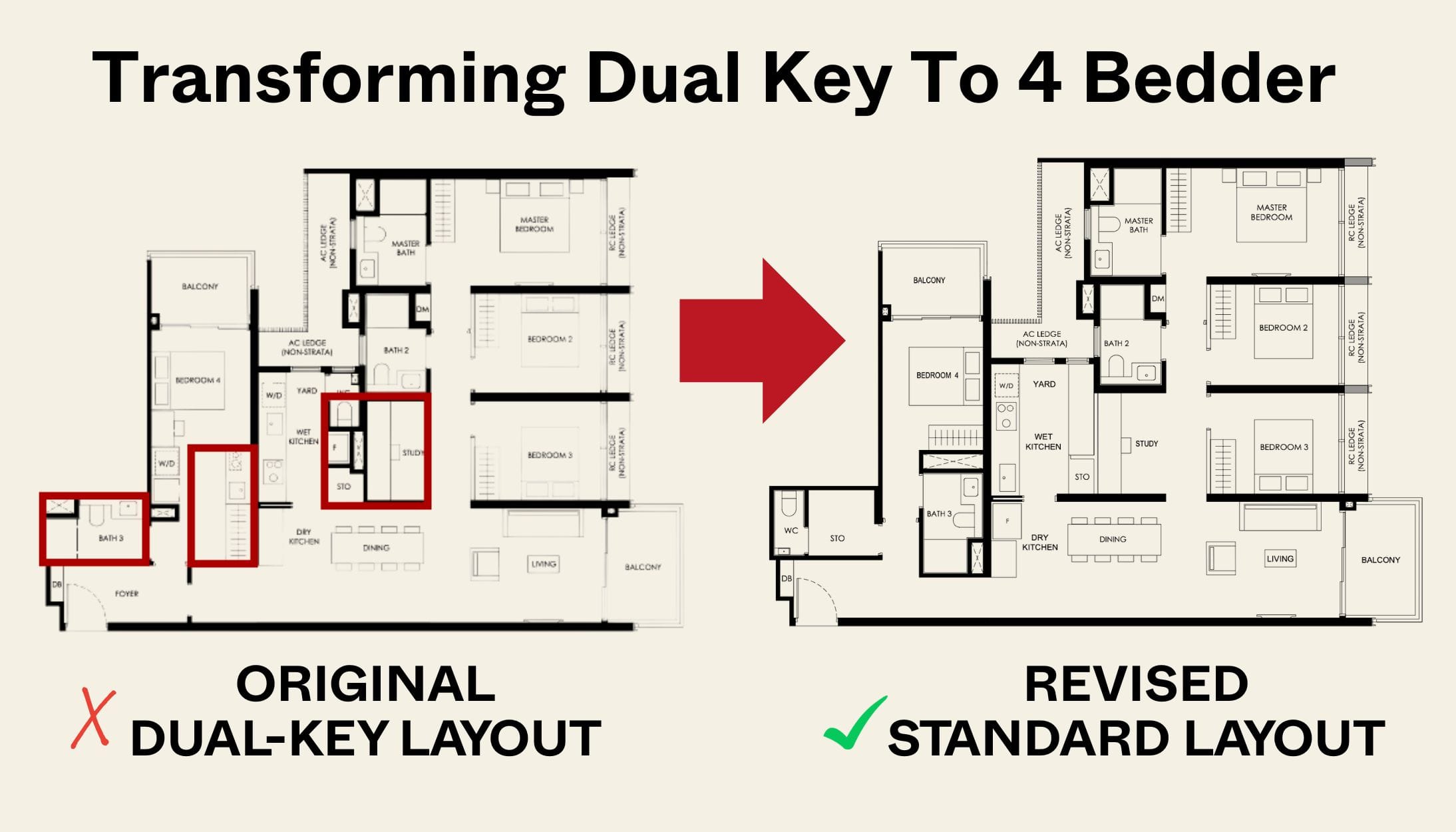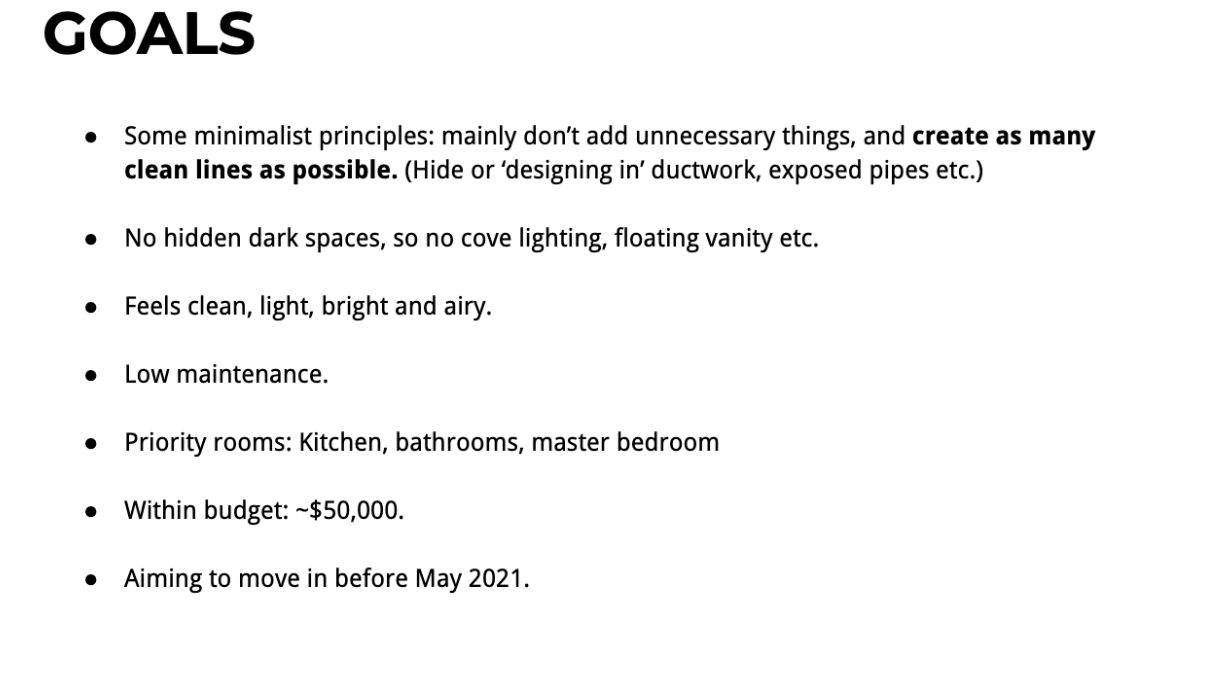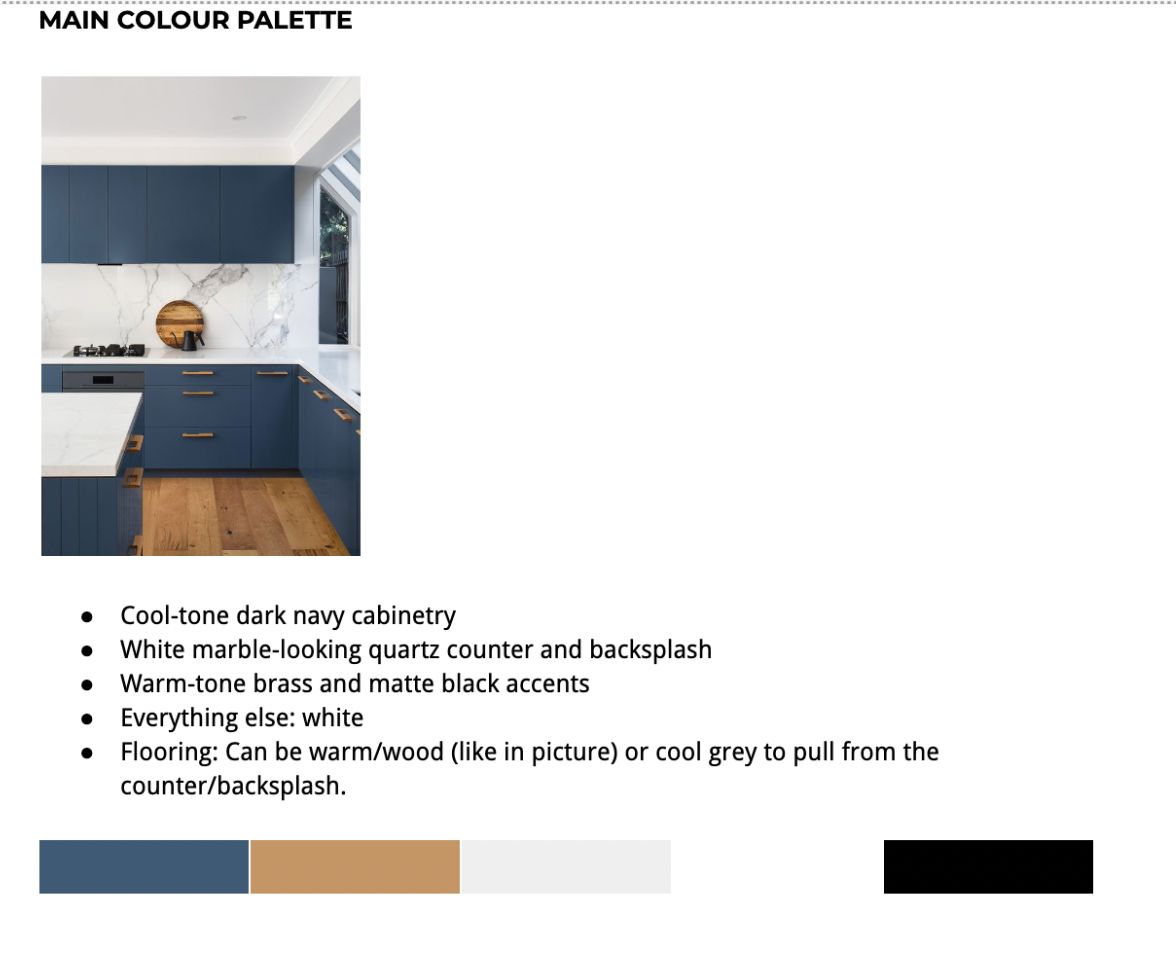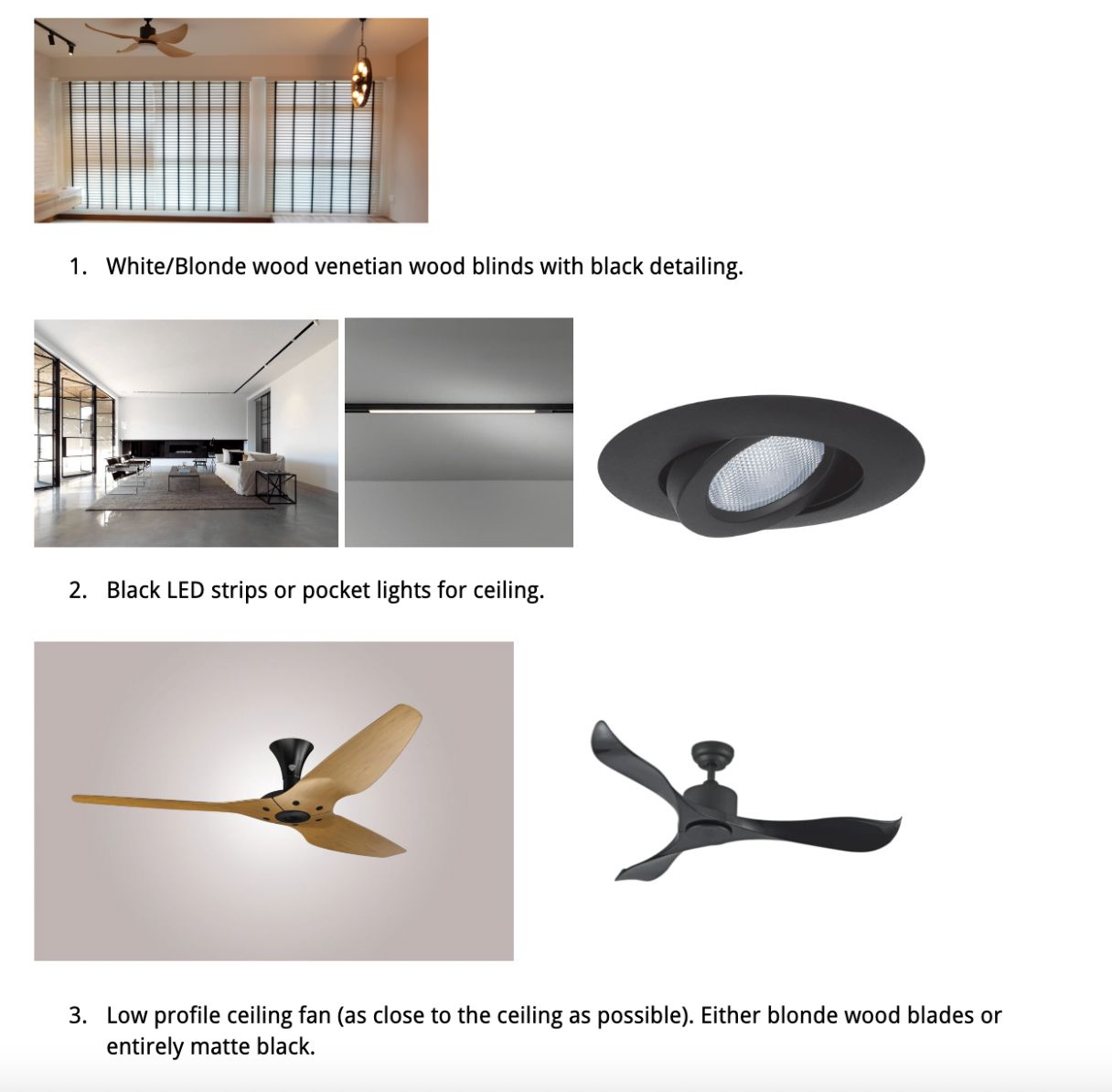An Introvert Renovates: How To Design An Introvert’s Home (Part 2)

Get The Property Insights Serious Buyers Read First: Join 50,000+ readers who rely on our weekly breakdowns of Singapore’s property market.
I think I’ve been preparing for this my whole life. For as long as I can remember, I’ve been interested in interior design.
As a school kid, I remember eagerly awaiting the arrival of the yearly IKEA catalogue in the mail. I played the life simulation computer game The Sims just so I could build and decorate houses for my characters to live in. My bedroom became a testbed for the latest interior design trends I could afford. Even now, my Netflix and YouTube staples are home makeovers and interior design shows.
I’ve also always been an introvert, meaning that I prefer environments that won’t overstimulate me. I like keeping my surroundings clean, tidy and organised, just so I’m immediately at ease.
When it finally came to designing the interiors of my own home, I was pretty certain of what I wanted. You can check out my 30-page interior design brief, but I won’t be instructing you on how to recreate my specific interior design style, or any for that matter.
Rather, in Parts 2 and 3 of my renovation journey, I’ll be sharing with you the broad strategies I used to create a soothing sanctuary for my introverted self. I believe these strategies can be applied to any home as long as your renovation goal is to create a space that calms and restores.
In Part 2, these three strategies are intended to guide your decisions on the ‘bones’ of the home, the fundamentals about structure, colour and lighting that will create spaces fit for an introvert.
1. Adopt a small, largely neutral colour palette
Bright colours are energetic. Bright colours demand your attention. They literally excite your nervous system, starting by searing your retinas, which consequently sets your brain abuzz. And that’s a no-no for introverts.
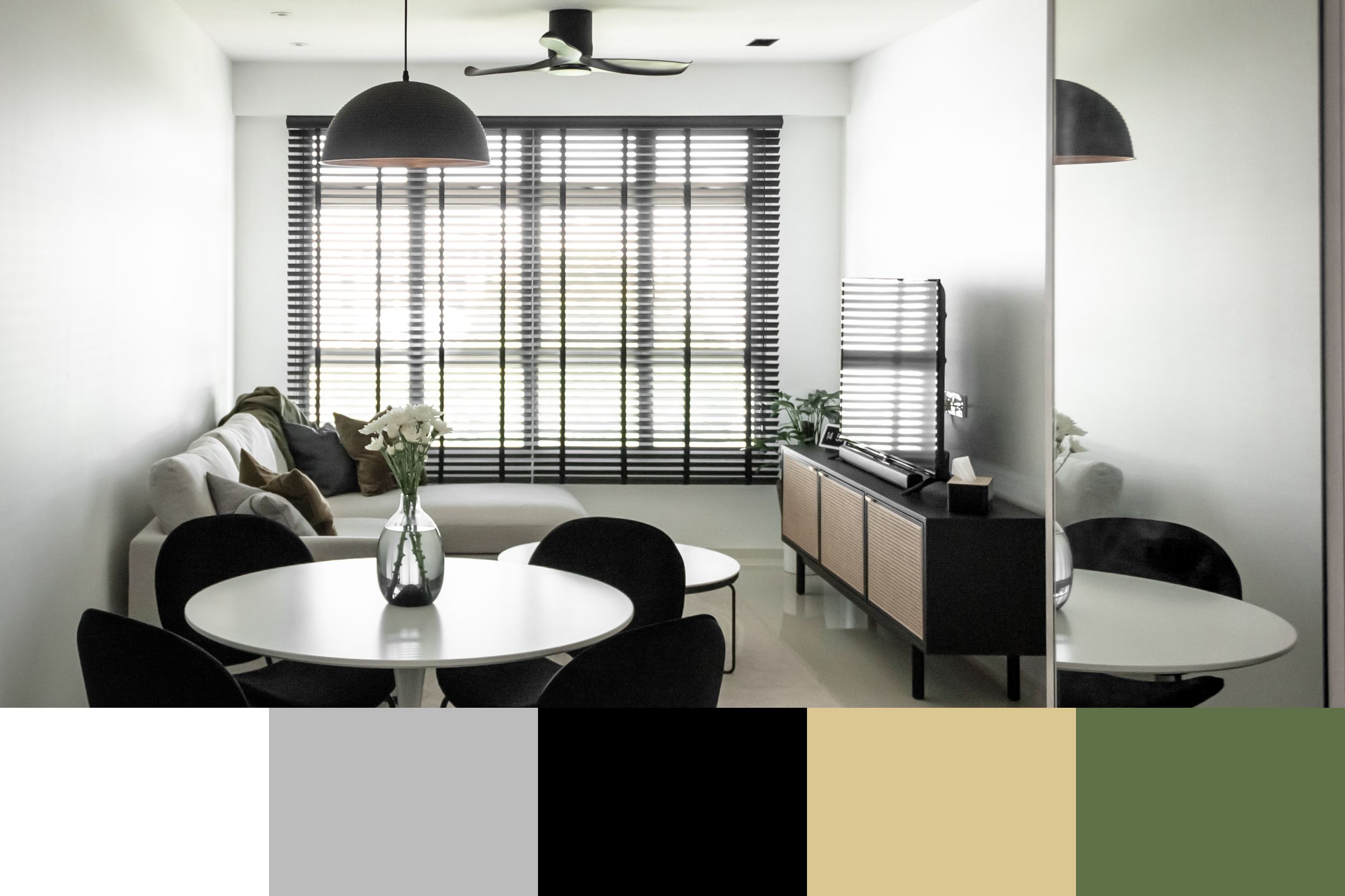
Earlier this year, I professed my love for neutral-coloured interiors on Stacked. And it’s not difficult to see why – there’s just something about a monochromatic room, or even a space awash in beiges that just makes my soul sigh in relief.
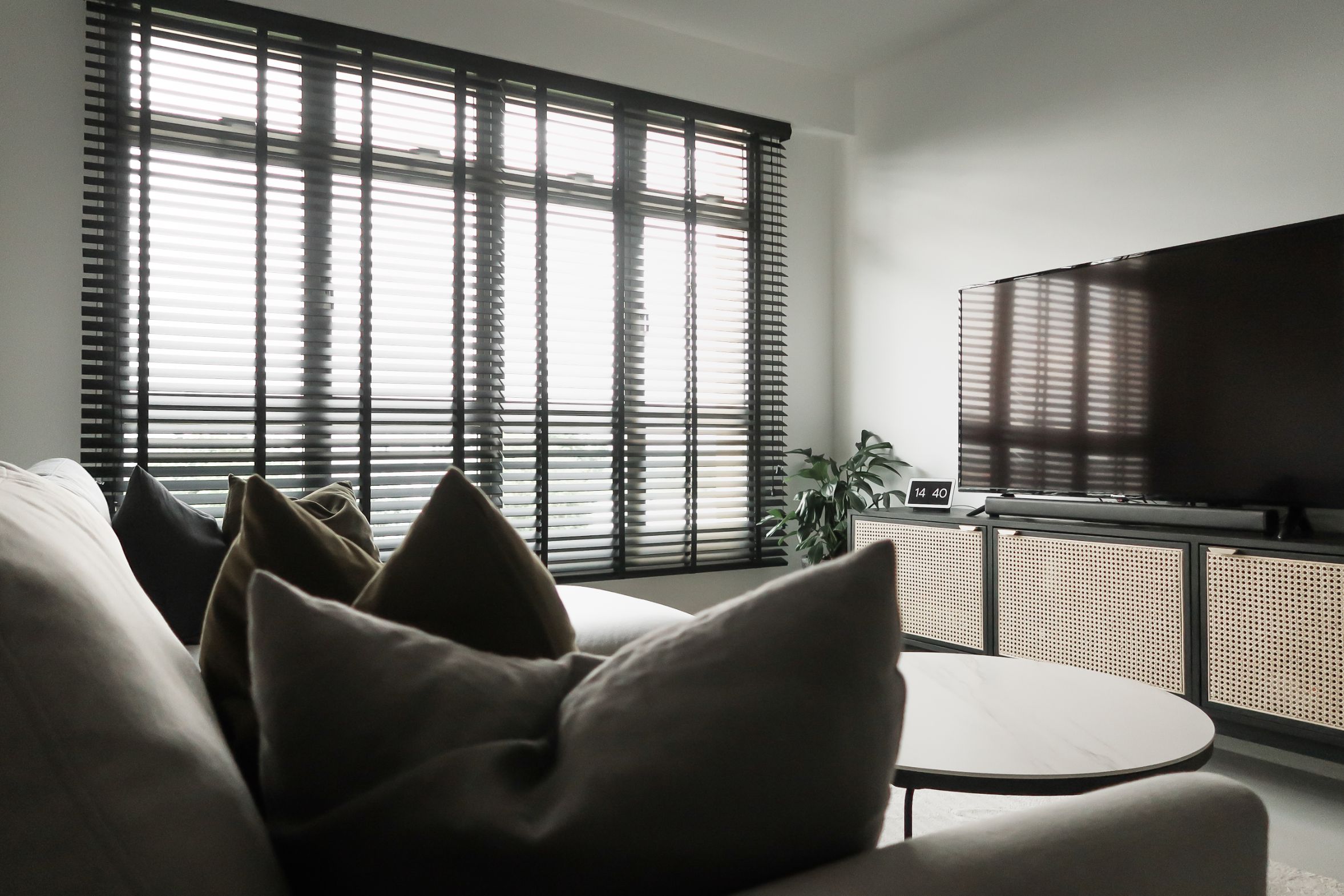
Property AdviceA Black & White Lover’s Guide To Choosing Colours For Your Home
by DanI’m not saying that you can’t have fun with colour. Have a bright colour, or even two. I myself chose green as an accent colour. Pastels are also a great way to introduce colour without alarming your senses.
The trick though, is to be very selective about what colours go into your home, and absolutely disciplined about maintaining that colour palette from ceiling to floor.
When there’s that sort of harmony and predictability in the colours of your home, your mind won’t be jumping every time you round a corner.
2. Reduce architectural lines
This is where I may lose some of you. The concept of architectural lines sounds cheem, and the fixes I propose may not seem entirely pragmatic. But this is the strategy that will take your home from mere space to sanctuary.
Have a look around at your walls and ceilings. What sort of features are there? Chances are there will be niches, pillars and beams that create extraneous corners and lines.
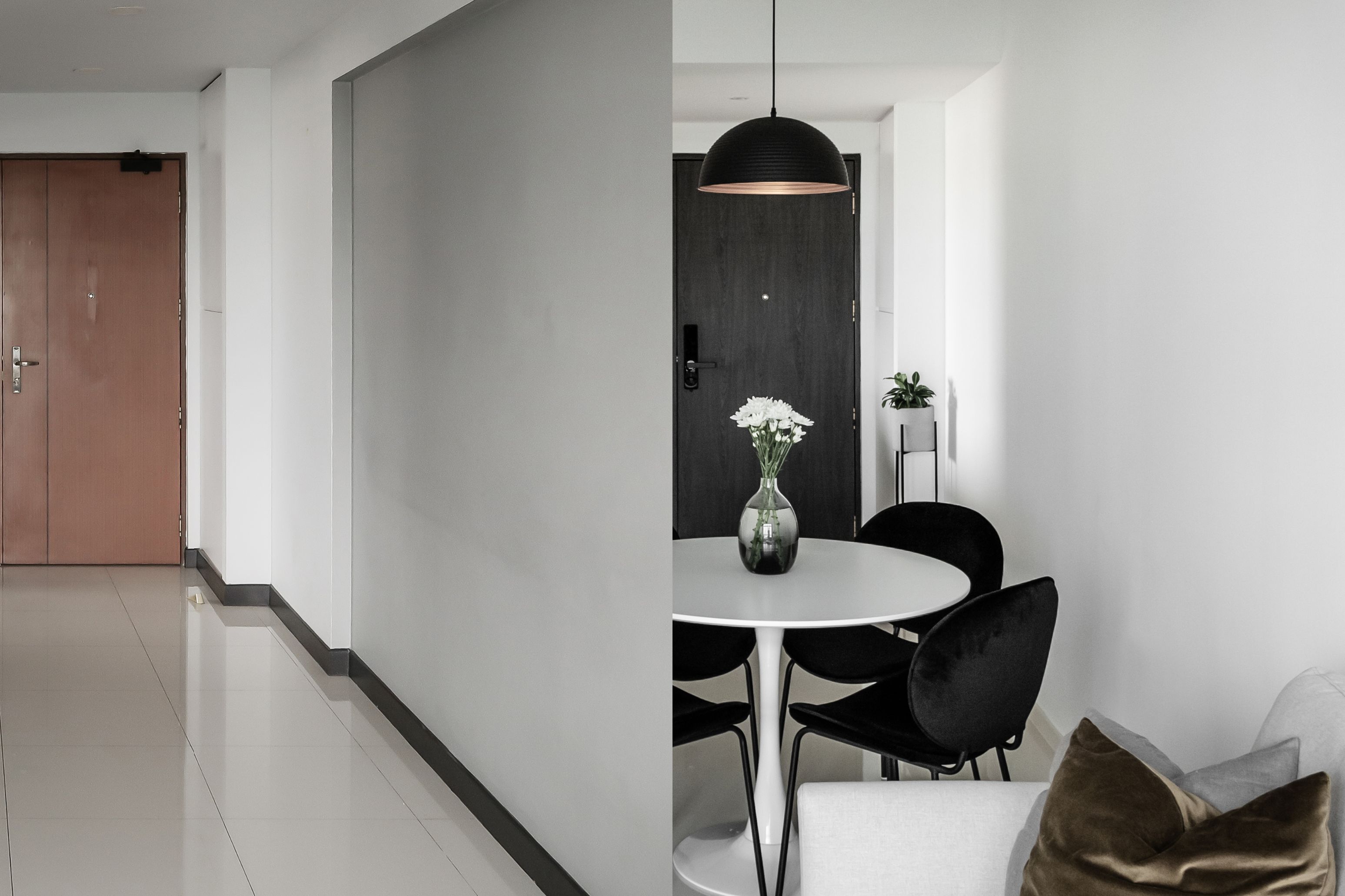
I dislike niches, the parts of walls that dip in, for no reason obvious to me. (I’ve since been told it’s to save material on walls that aren’t structural and can be hacked.) I’ve seen homes which make them a feature by painting them a different colour or installing carpentry. But as I’m in pursuit of a blank canvas, I had the niches covered up with dry wall. The point is to extend a surface from corner to corner, reducing the number of lines on it.
More from Stacked
How Will Budget 2025 Affect The Singapore Property Market? 8 Key Changes To Note
It’s that time of year again—Budget 2025 was just announced, and many are wondering how it will impact the property…

The same principle applies everywhere else. False ceilings are great because they hide wiring for your ceiling fixtures and create a flat surface overhead. But I often see cutouts for air-conditioning units because the ceiling isn’t high enough. I decided to terminate my false ceilings wherever my air-conditioning units were, just to avoid those cut-outs.
Pipes and trunking are another culprit adding extraneous architectural lines. Conceal pipes where possible, and if you must have trunking, have them boxed up. Out of sight, out of mind.
Reducing architectural lines may be a step too far for you, but remember, we’re trying to minimise visual stimulation here. As far as I’m concerned, the fewer lines, the better.
3. Keep lighting soft and warm
If you’ve followed the first two strategies, you’re already in good stead to create an introvert’s home. But if you don’t pay attention to lighting, you can really wreck all the good work you’ve done for your sanctuary-to-be.
The operative word here is: diffused. As far as possible, try to avoid a single harsh central point of light in a room. I tried to have as many lighting points as possible, spread evenly across each ceiling. That way, I could use dimmer bulbs and achieve softer, even illumination in my spaces.
Cove lighting is a popular way to light a space softly, but it’s not my favourite lighting method because it creates a nook for trapping dust and attracts other unmentionables. Not very calming at all.

Where multiple lighting points weren’t possible in my home, I chose light fixtures with more than one bulb. Track lighting is another great option to spread out your light sources.
And lastly, for a home that reads cosy and mellow, I always opt for warm lighting. I dislike harsh, white light for domestic environments – I figure that when we’re at home at night, we should ideally be winding down from the day. So why extend the day with daylight bulbs?
And in the interest of keeping my colour palette consistent throughout my home, every single bulb in my flat is warm white, specifically the colour temperature 3,000K to 3,200K. Yes, even in my service yard, bathrooms and home shelter. I don’t wish to be wincing every time I turn on a light in my home.
Create a blank canvas
I truly believe interior design should resonate with your personality. I’m an introvert, and I used these three strategies to guide my renovation decisions and create my ultimate refuge from a turbulent world. But it’s just a blank canvas. In Part 3, I’ll be sharing three more strategies for furnishing your introverted space.
Dan
Dan is a diehard introvert, freelance writer, first-time property owner, and backseat interior designer. He posts pictures of his home and writes about an odd combination of interior design, lifestyle, and self-development on his Instagram channel @stayingonthehill.Read next from Homeowner Stories

Homeowner Stories Does The “Sell One, Buy Two” Strategy Still Work In 2025? 3 Real Stories From Singapore Homeowners

Homeowner Stories “If We Sell, We’ll Never Have A Home This Big Again”: What Singaporean Parents Do After The Kids Move Out

Homeowner Stories I’ve Lived In Braddell View For 14 Years: What It’s Like To Live In Singapore’s Largest Residential Site

Homeowner Stories Why These Buyers Chose Older Leasehold Condos—And Have No Regrets
Latest Posts

Pro 7 Reasons Reflections at Keppel Bay Underperformed—Despite Its Iconic Design and Prime Waterfront Location

New Launch Condo Analysis This New River Valley Condo Starts At $1.2M: And It’s Cheaper Than Some City-Fringe Launches

New Launch Condo Analysis This New 376-Unit Condo In Sembawang Might Be The Best Pick For Young Families: Here’s Why

Landed Home Tours Where To Find Freehold Semi-D Landed Homes From $4.4m: Touring Gilstead Road
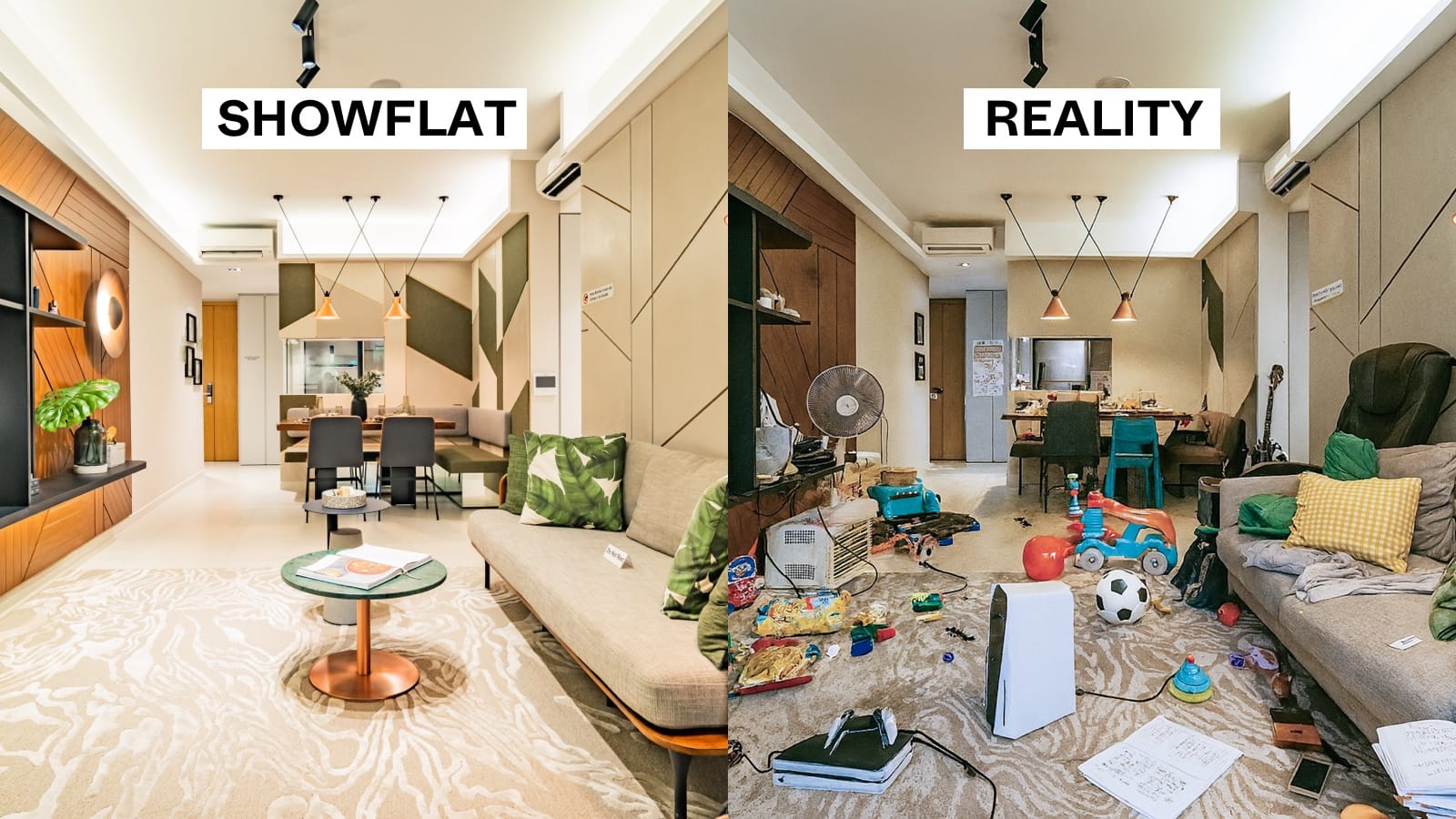
Singapore Property News The Trick to Seeing Through a Condo Showflat (Most Buyers Never Do This)

Overseas Property Investing Can You Really Buy A House In Italy For €1? Here’s What Singaporeans Should Know

On The Market 5 Cheapest 5-Room HDB Flats Near MRT Stations From $550k
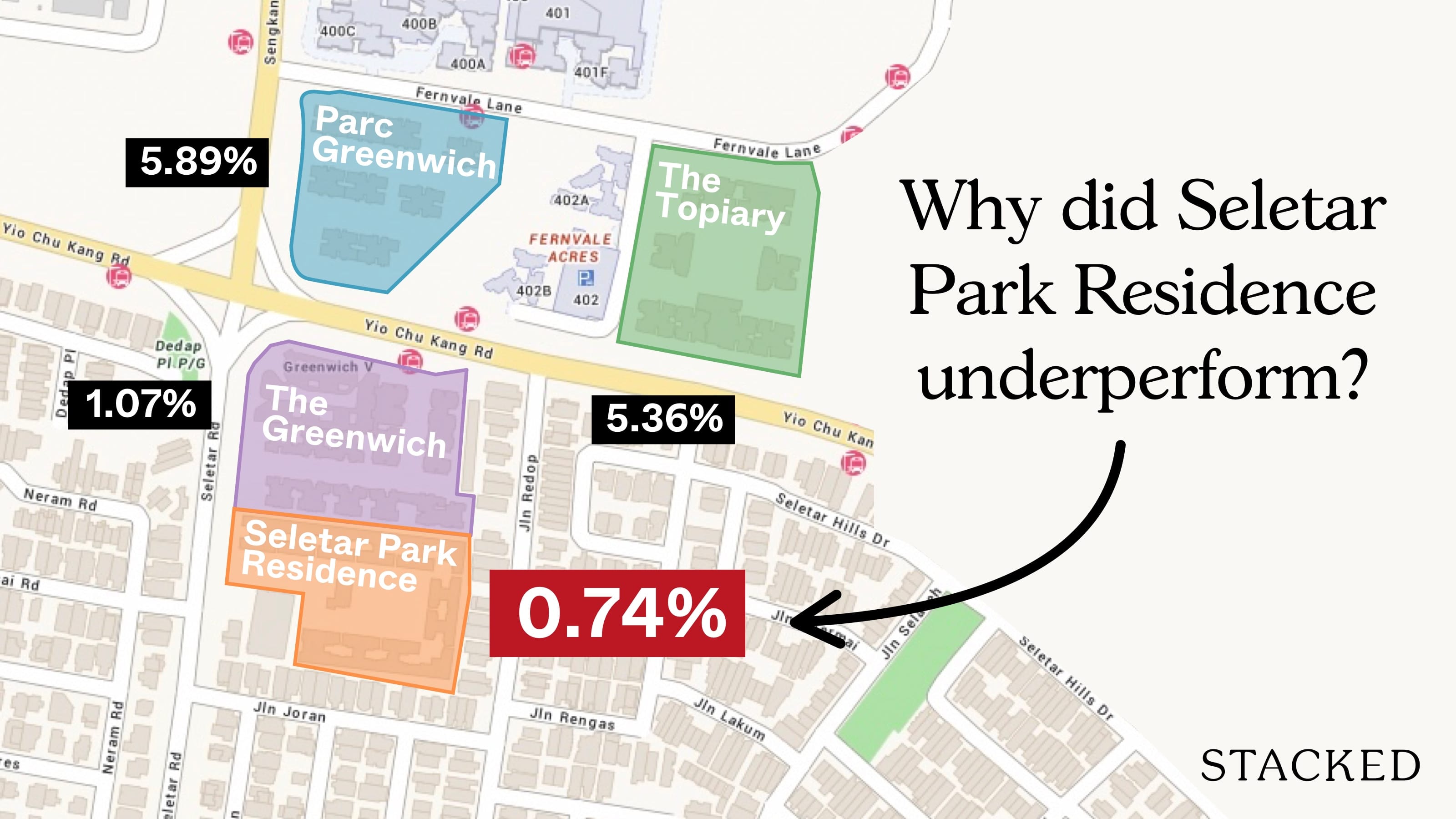
Pro Why Seletar Park Residence Underperformed—Despite Its District 28 Location And Large Unit Sizes
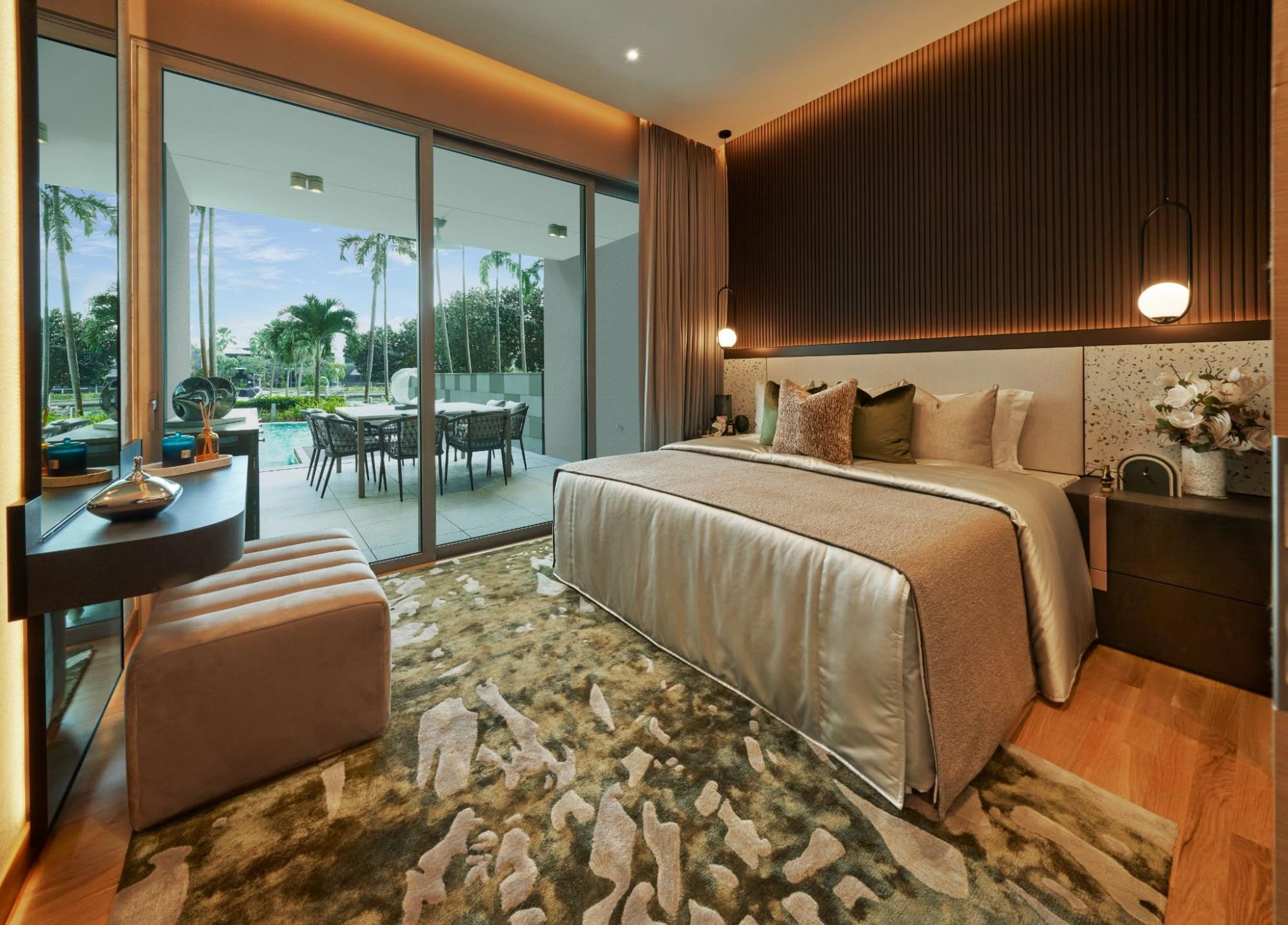
On The Market Inside A Luxury Waterfront Home at The Residences At W Singapore Sentosa Cove

New Launch Condo Analysis Singapore’s Tallest New Condo Comes With the Highest Infinity Pool: Is The 63-Storey Promenade Peak Worth A Look?

Property Market Commentary We Tracked The Rise Of Million-Dollar HDB Flats By Estate — And The Results May Surprise You
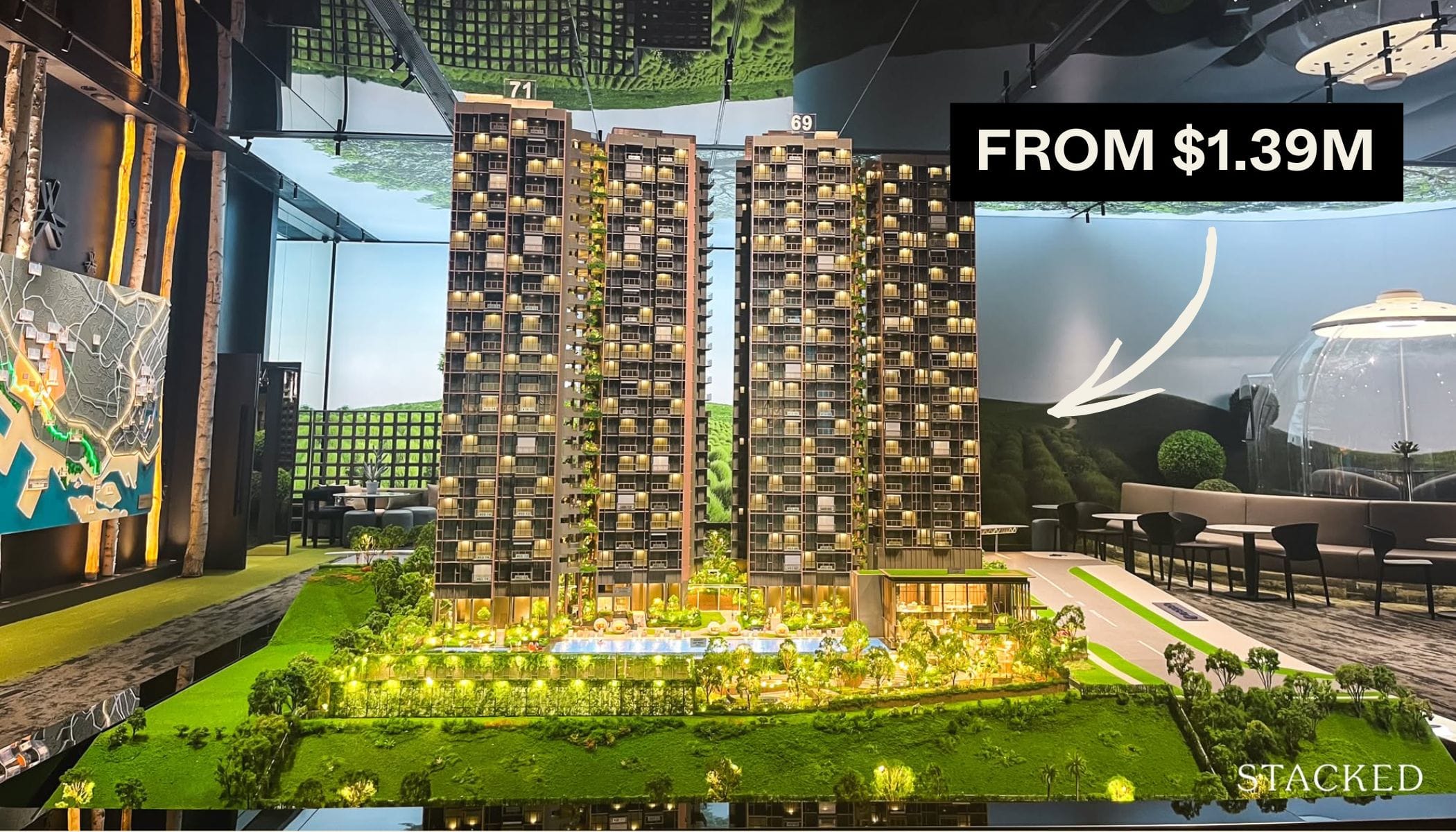
Editor's Pick LyndenWoods Condo Pricing Breakdown: We Compare Its Pricing Against Bloomsbury Residences, Normanton Park & One-North Eden
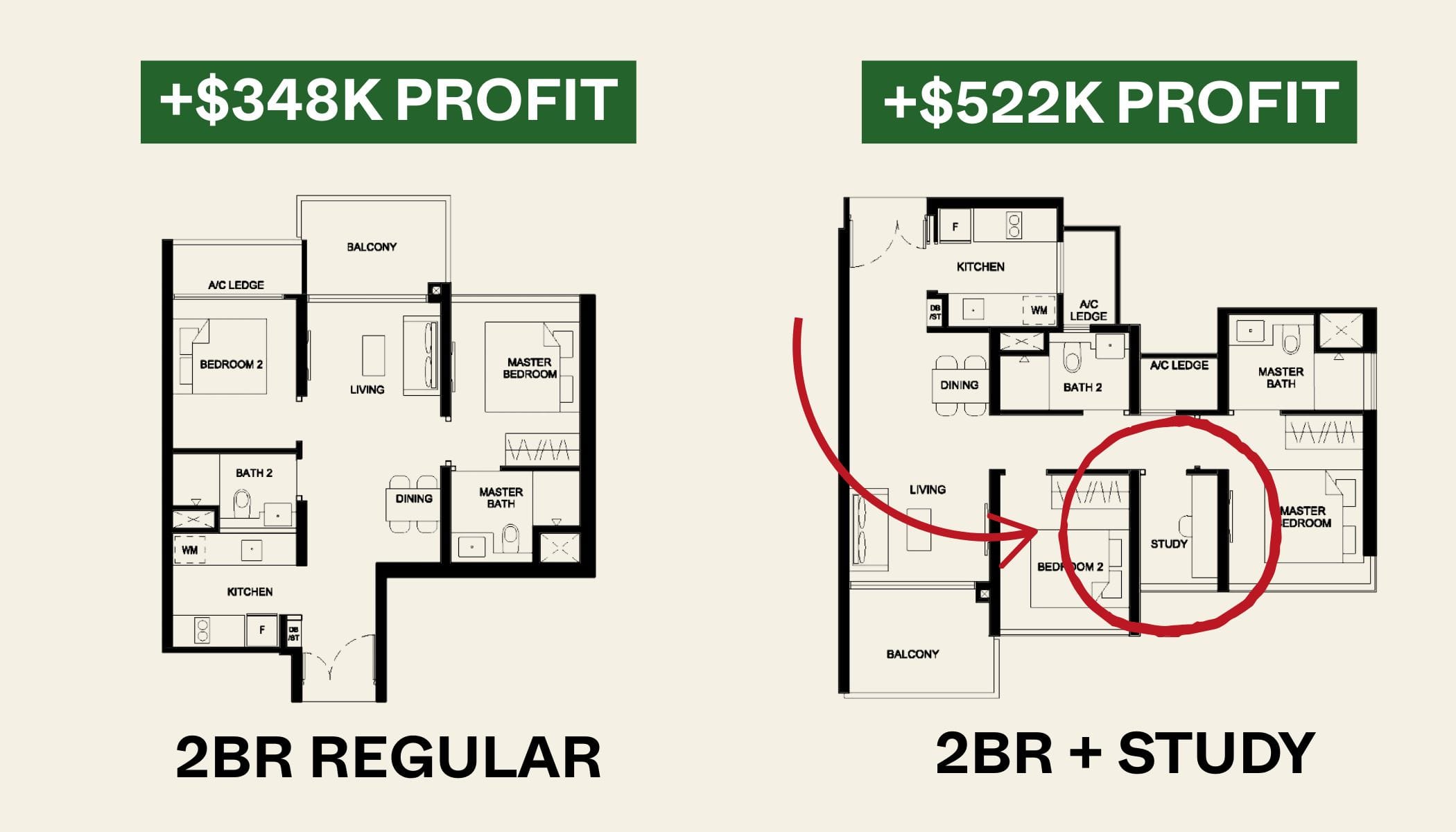
Property Market Commentary 2-Bedder vs 2+Study Units: Which Condo Layout Has Better Returns Over The Last Decade?

Editor's Pick Where $4 Million Semi-Ds Sit Next To $40 Million GCBs: Touring First Avenue In Bukit Timah
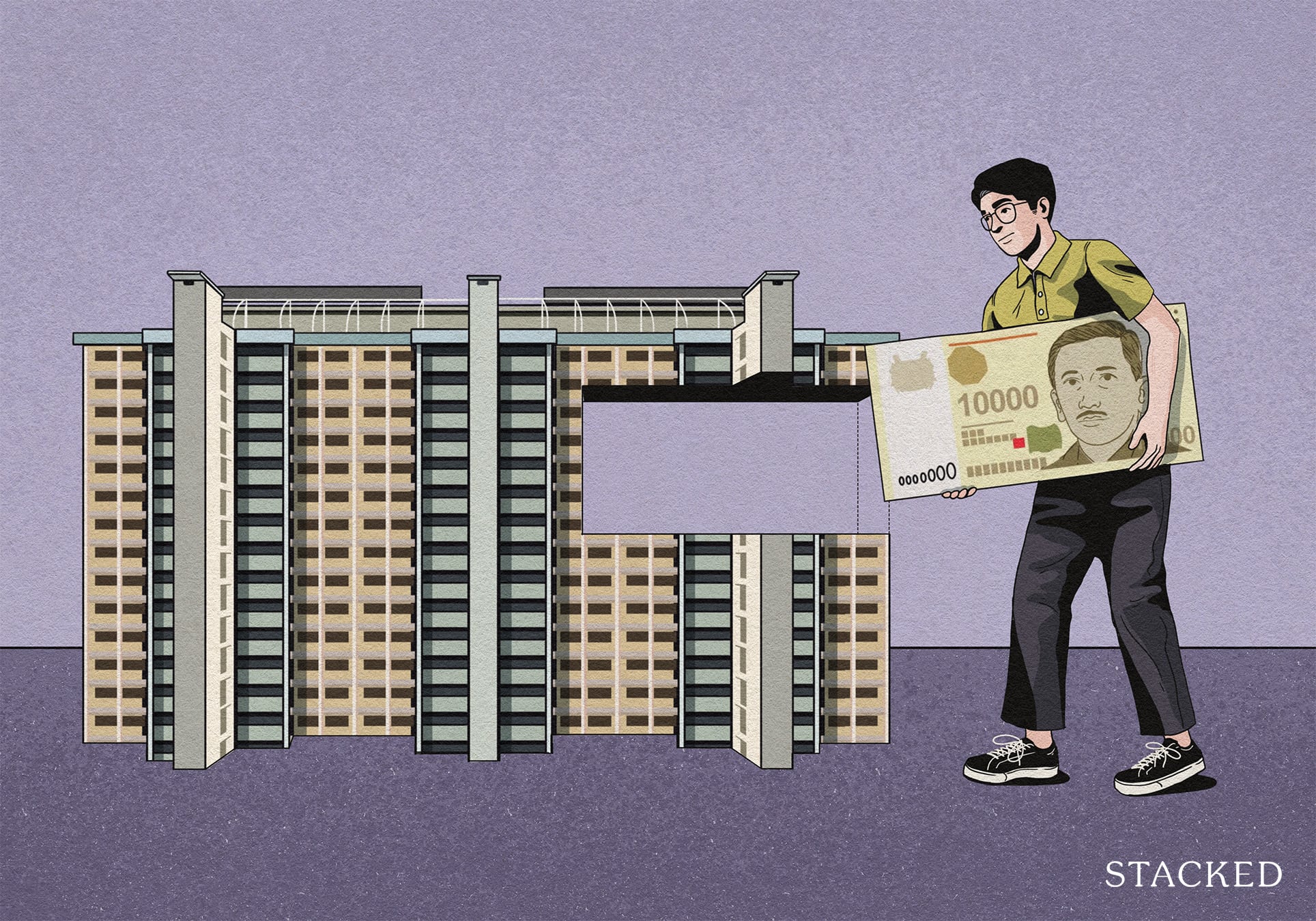
Singapore Property News So Is The 99-1 Property Split Strategy Legal Or Not?
